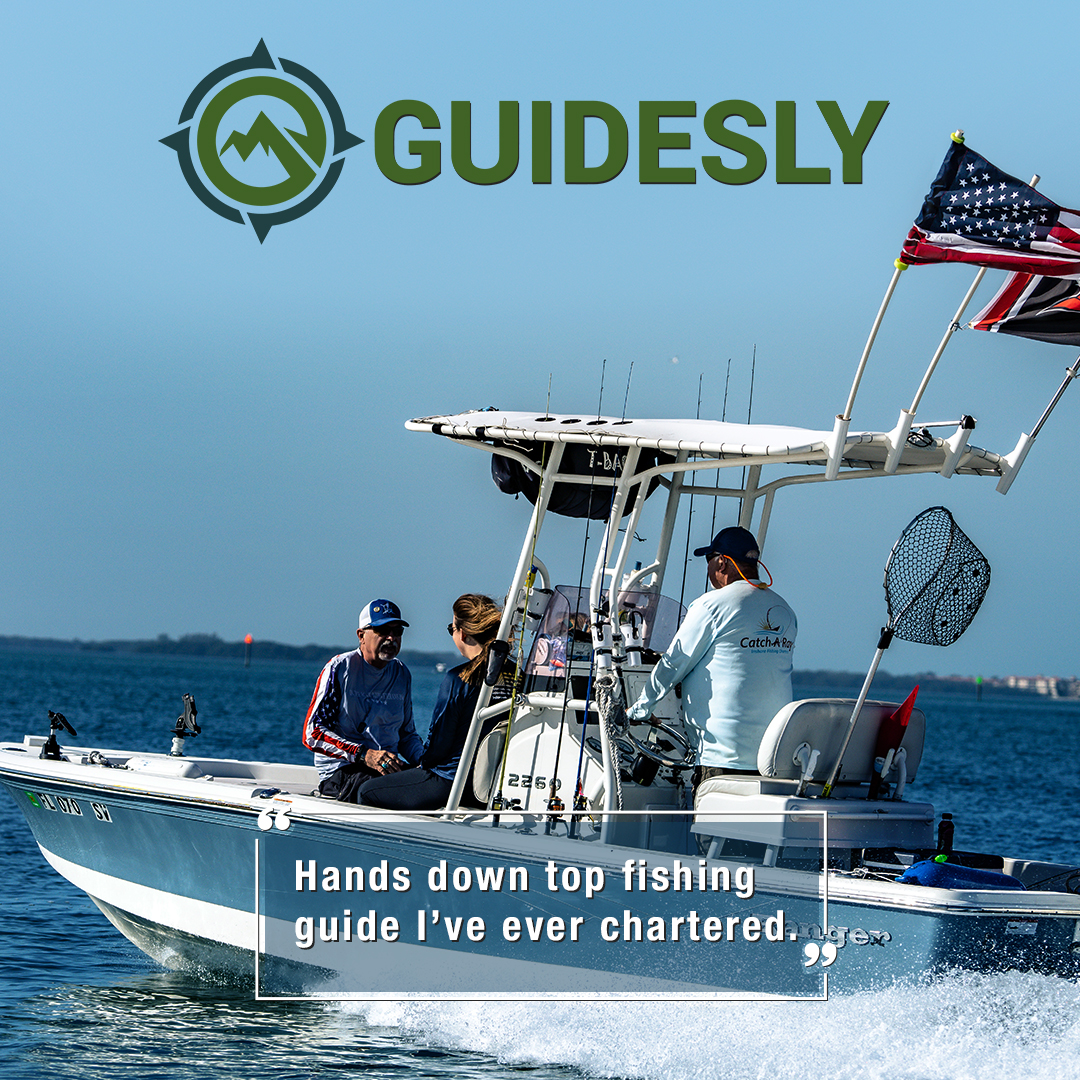Nymphing, Introduction to the Art of Nymph Fly Fishing
Discover the essentials of nymph fly fishing, including techniques, top nymph flies, and advanced methods for targeting rainbow and brown trout.
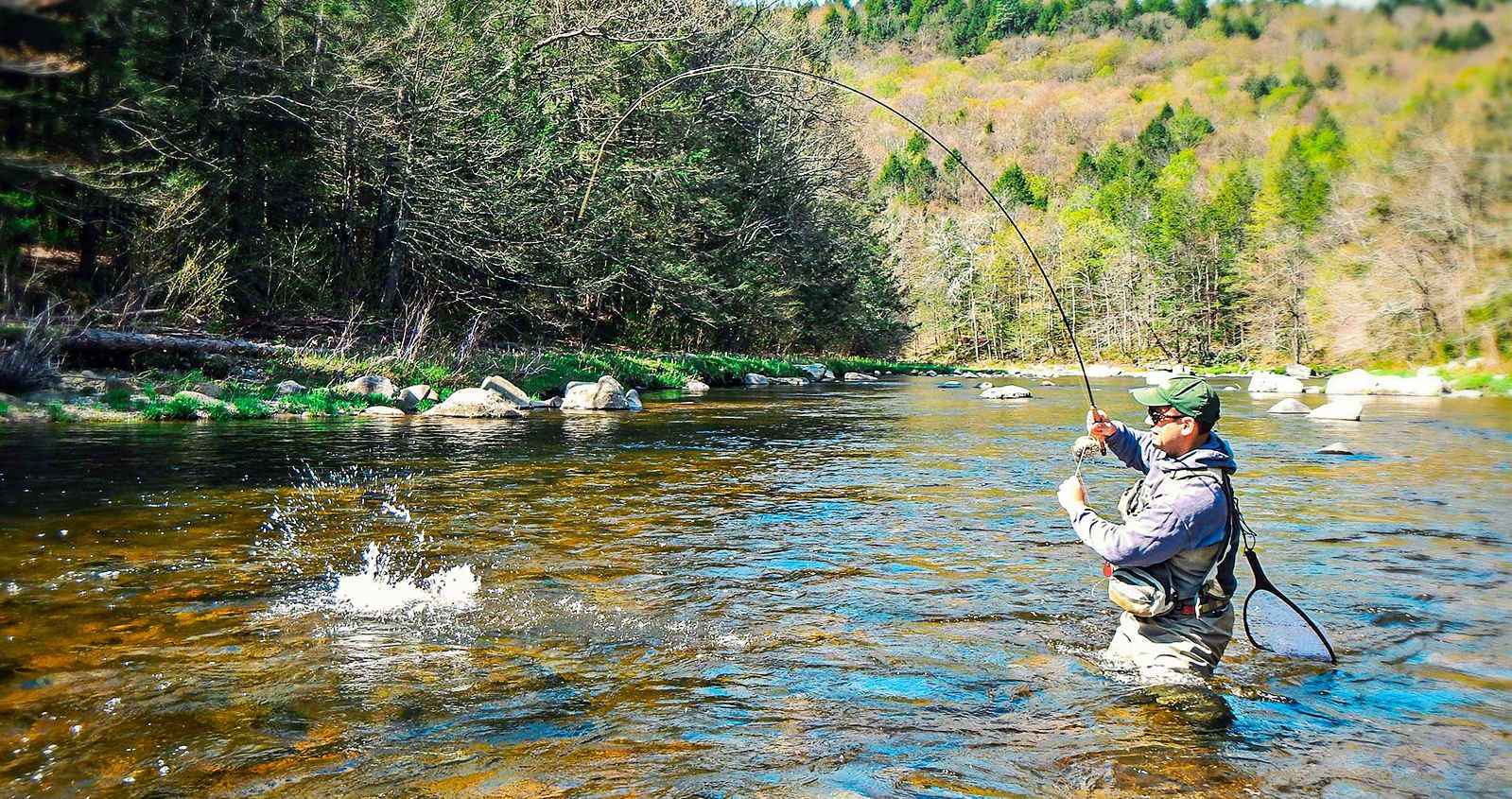
Introduction to Nymphing
Fly fishing is unquestionably one of the most iconic and popular forms of catching fish, and fly fishing with nymphs is one of the fundamental techniques that anglers must master. Nymph fly fishing is referred to only as nymphing, which is the term we will use moving forward. Every year, anglers from all over the world bring their fly fishing gear to rivers, lakes, and streams in search of fish. There are numerous fly fishing techniques to choose from. In this fly fishing series, we'll look at nymphing. Let's take a moment to answer some introductory questions before we get started. Advanced anglers, feel free to jump ahead.
This introduction will follow basic techniques, the best nymph flies, advanced nymphing techniques, where and when to nymph fish, and trends such as euro nymphing. Let's talk about nymphing, one of the most effective ways to fly fish for trout in almost any water.
What is Nymphing?
Nymphing is a general term for a wet fly representing subaquatic insects. Nymph flies are designed to look like immature insects in a juvenile or larvae stage. Many types of insects spend more time in this nymph stage of development than the adult stage and make up a big part of a trout’s usual diet. The most common insects eaten are nymphs (mayflies and stoneflies), pupa (caddisflies and midges), and mergers.

In contrast to dry fly fishing, nymph flies are fished entirely beneath the surface of the water, and a fly angler will typically use a weighted fly to assist with this. It can prove extremely productive as most trout spend most of their time feeding under the water and not at the surface. Nymphs can be found in most rivers or lakes no matter what time of year or the hour of the day. And where there are nymphs to be found, there are sure to be hungry trout snacking on them!
It is estimated that nymphs comprise 75%-90% of a trout's diet, so there is always a good chance that there is a nymph along the bottom waiting to be eaten and a trout in search of that fishing nymph.
What is a Nymph?
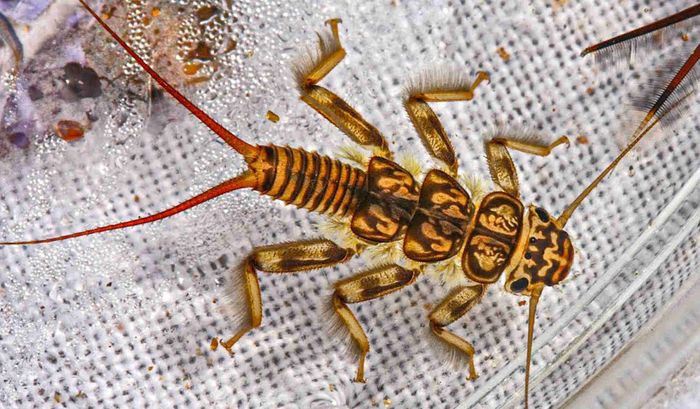
A nymph is an insect that lives in the water. Let's take one great trout favorite, the stonefly nymph. Stoneflies are big bugs living 2-4 years in the water before hatching, so trout eat them year-round. Stonefly nymphs live under the rocks along swift currents with good oxygen levels to survive due to their underdeveloped gills. Like all nymphs, they go through a larval and pupal stage before they emerge as winged adults, reproduce and die. Before a nymph fully hatches, there’s a period of increased activity from one hour to several days, depending on the species—the extra crawling and scurrying around results in many nymphs dislodged and drifting downstream to an always-ready trout.
Nymph flies are designed to look like immature insects in a juvenile or larvae stage. Many types of insects spend more time in this nymph stage of development than the adult stage and make up a big part of a trout’s usual diet. The most common insects eaten are nymphs (mayflies and stoneflies), pupa (caddisflies and midges), and mergers.

Why is Nymphing the Best Approach?
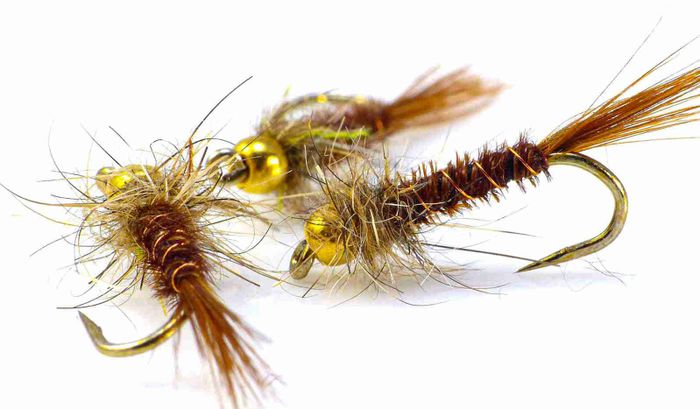
We have covered what nymphing is and what a nymph is. Ultimately, that should answer why nymphing is the best approach in many situations. First and foremost, because many times, that is what the trout wants. If they feed on nymphs and use dry flies, you could be in for a long day. The simple answer is why nymphing is where the trout's food is, and we want to imitate that insect to catch fish.
Nymphing, the Art of Fly Fishing with Nymphs
While fishing with nymphs basically involves fishing under the surface of the water for trout, it does not necessarily mean that it will be easy to catch them. A beginner will quickly discover that, just like fishing with dry flies and fly fishing in general, there is plenty of trial and error involved. The key to using nymphs is just like other flies, baits, or lures in that you must imitate the natural nymphs in a given fishing spot as close as you can in color, size, and behavior.

While that sounds simple, it is impossible to see everything that is going on under the surface and what the fish are feeding on at any given time. This is what makes nymphing so much fun and full of mystery, and why nymphing is many anglers’ favorite way to fly fish. Trout are notoriously picky eaters, but if you follow the right steps from selection to fishing, you can find plenty of success with nymphs. This also leads us to one of the key secrets of successful nymphing, make sure you bring a variety of nymphs to the water. I suggest a good variety of types and sizes. Having a good nymph assortment can make a long day pick up when you start hitting the right nymph. Study the water, look for evidence, rely on your instincts, and above all, experiment with sizes and types.
Elevate Your Fishing Skills: Master the Basics of Indicator Nymphing
For any angler aiming to increase their catch, mastering the art of nymphing is essential. Enhance your technique by adopting indicator nymphing, a method that employs a strike indicator to improve your fishing success. This guide equips you with the essentials to refine your skills in this effective fly fishing approach.
Understand the Basics of Indicator Nymphing
Indicator nymphing requires casting your fly so that a strike indicator signals when a trout bites. Anglers should familiarize themselves with aquatic insects such as mayflies and stoneflies, which are primary trout food. These insects, or nymphs, spend much of their life underwater, making them readily accessible to fish. Indicator nymphing provides anglers with a visual signal whenever a fish interacts with their nymph, making this technique effective and rewarding.
Select the Right Equipment for Indicator Nymphing
Success in indicator nymphing begins with the appropriate gear. A basic nymphing setup includes a 9-foot 4, 5, or 6-weight rod and a standard single action fly reel. This provides the necessary leverage for effective line control and versatility across various fishing conditions. Pair this setup with a medium-to-fast action rod and a floating, weight-forward line for dynamic casting.
Equip yourself with a 9-foot tapered nylon leader, along with tippets ranging from 3X to 6X. Be ready with a selection of indicators, split shots, and key nymph patterns like the Copper John and Pheasant Tail Nymph. These components collectively maximize presentation in the diverse water column depths.
Choose Your Nymphs Wisely
In selecting nymphs, consider attractors versus imitations. Attractors, such as the Copper John, capture trout with vivid colors and movement, making them ideal during low insect activity. Imitations mimic specific local insects. If you know of recent hatches, like that of the Hendrickson mayfly, using similar patterns can entice trout focused on that food source.
Master Depth Control for Effective Nymphing
Controlling the depth of your fly is crucial because trout often feed near the riverbed. Nymphing is a fundamentally simple process that involves presenting a fly at the trout's feeding depth. Adjust the strike indicator according to water depth and current speed for optimal positioning. Typically, place indicators a foot above the lowest fly on your setup.
Use split shots or tungsten beads to keep nymphs near the bottom. Adjust bead colors to adapt to different environments, as some require stealth to avoid spooking fish with high visibility.
Perfect Your Drift Control Techniques
A natural drift is vital for making your nymph appealing to trout. Minimize drag by using techniques such as mending or performing a tuck cast. These methods prevent unnatural movement, ensuring your nymph follows the flow of natural prey.
For those wishing to refine their skills further, European nymphing's tight-line methods enhance sensitivity to strike detection and drift control, providing a more connected fishing experience.
Develop Sharp Strike Detection Skills
The strike indicator acts as your visual guide to detecting bites. Attach buoyant indicators at strategic points on your leader. Observing the indicator for sudden pauses or deviations aids in prompt strike responses.
Refine your reaction skills by practicing hooksets on subtle movements. These minor improvements can significantly increase your catch rate over time.
Tailor Your Approach to Different Water Types
Adaptive techniques extend your effectiveness across varying water types. In smaller streams, precision targeting and short-line casting work best around slow currents and eddies. Larger rivers require in-line indicators for broad casting and extended drifts over meshed currents, where trout are most active.
Aligning your approaches with water conditions increases your chances of success.
Practice and Hone Your Indicator Nymphing Skills
Practice is fundamental in any angling skill. Spend time refining your technique in different waters. Each day on the river offers new insights into behavior and technique, turning challenges into opportunities for learning and growth.
Through dedication and adaptability, you will enhance your proficiency in indicator nymphing, transforming your fly fishing experiences into consistent success stories.
When and Where to Fish with Nymphs
One of the greatest things about nymphing is the versatility it provides. No matter what type of fishing you may be into, being versatile and adaptable will result in the ability to catch more fish. Every single body of water, whether a giant lake, a small pond, a fast-flowing river, or a slow creek, is likely to have some population of these insects. So no matter where you are fishing, you can likely use nymph flies to catch fish.
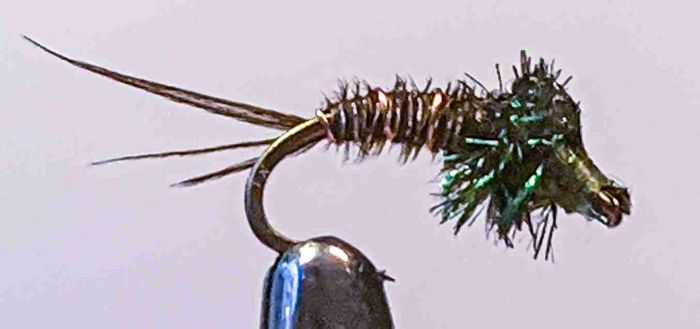
I like to look for pocket water that might be hard to reach, fast-moving water. Pocket water will be highlighted by boulders breaking the rifle into small pockets. Getting nymphing rigs into this area can be difficult, especially given the fast water. The advantage is less fishing pressure and more trout. Cast along the seams along the edges of the rocks, so the nymph drifts through the pocket and down the seam. Keep your fly rod high as you dead drift through the pocket water.
The first thing you need to do is identify what kind of natural nymphs the trout are eating so that you can match your artificial fly to the real thing. Try to match not only the colors and design but also the average size and style as close as possible. While it doesn’t need to be perfect, the closer you can match the naturally occurring insects, the better.
The second thing you will need to do is learn to read the water to present your nymph in the best possible spot with the best possible presentation to trick a trout into biting. The more lifelike and natural your fly looks, the more likely you will catch any target trout. We will cover more details and specifics about nymph fishing techniques later in this series.
What Fly Fishing Gear Will I Need to Get Started?
Getting started on any new type of fishing can sometimes be pretty costly, given all the necessary gear, but luckily with nymphing, it doesn’t have to be. From fishing a dry fly to hanging a euro nymph, the nymph rig can easily be added to any setup. While you can buy specialty nymphing fishing rods designed specifically for this task, you can easily use your fly fishing rod that you already own.
Of course, in addition to a fly fishing rod and reel, you will need the nymph flies and other nymph-specific pieces of gear, but as long as you already have a good rod and reel, you are off to a good start! The fly line is typically the same. Anglers like to use a strike indicator, especially in fast-moving water or, of course, in any situation that is hard to see. We will cover nymphing techniques in the following article in the series, but a few weighted flies, an angler with good mending skills, and enough tippet to keep adding to your nymph rig are all you need. In another section of this series, we will discuss all the specifics on gear and nymphs you should consider getting to be the most effective on your next trout fishing trip.
Everything You Need to Know About Nymphing
I hope this small introduction is enough to get you excited about nymphing and all of the exciting possibilities nymphing will bring to your trout fishing. We hope to provide some of the best information to help all anglers become the best at fly fishing with nymphs. This series will cover everything from basic techniques, where and when to use nymphs, the best flies to buy and choose, advanced techniques, and nymphing on the river.
By reading this series, you will not only start to grow your general knowledge on everything fly fishing but also learn the ins and outs of nymphing. So sit back and enjoy this 5 part nymphing series, and thank you for following along!
Check Out the Nymph Series:
The Guidesly Nymph Series walks the angler from introduction through techniques, tactics, flies, and the latest trends. We have several of our favorite nymphs and our resident fly tier Sean putting together nymph how-to videos for fly tiers.
- Introduction to Nymphing, Learn what is Nymphing, the art of fly fishing with a nymph
- Basic Techniques of Nymphing, Learn the basic techniques involved with nymphing
- Advanced Nymphing, Discuss the details of nymphing techniques
- Top 10 Nymph Flies, See the top 10 nymph flies with fly-tying videos
- Euro Nymphing, The latest trend in nymphing is European-style nymphing.
- Trout of North America, Find your nymphing prey. Learn about the top 10 trout species in North America.


